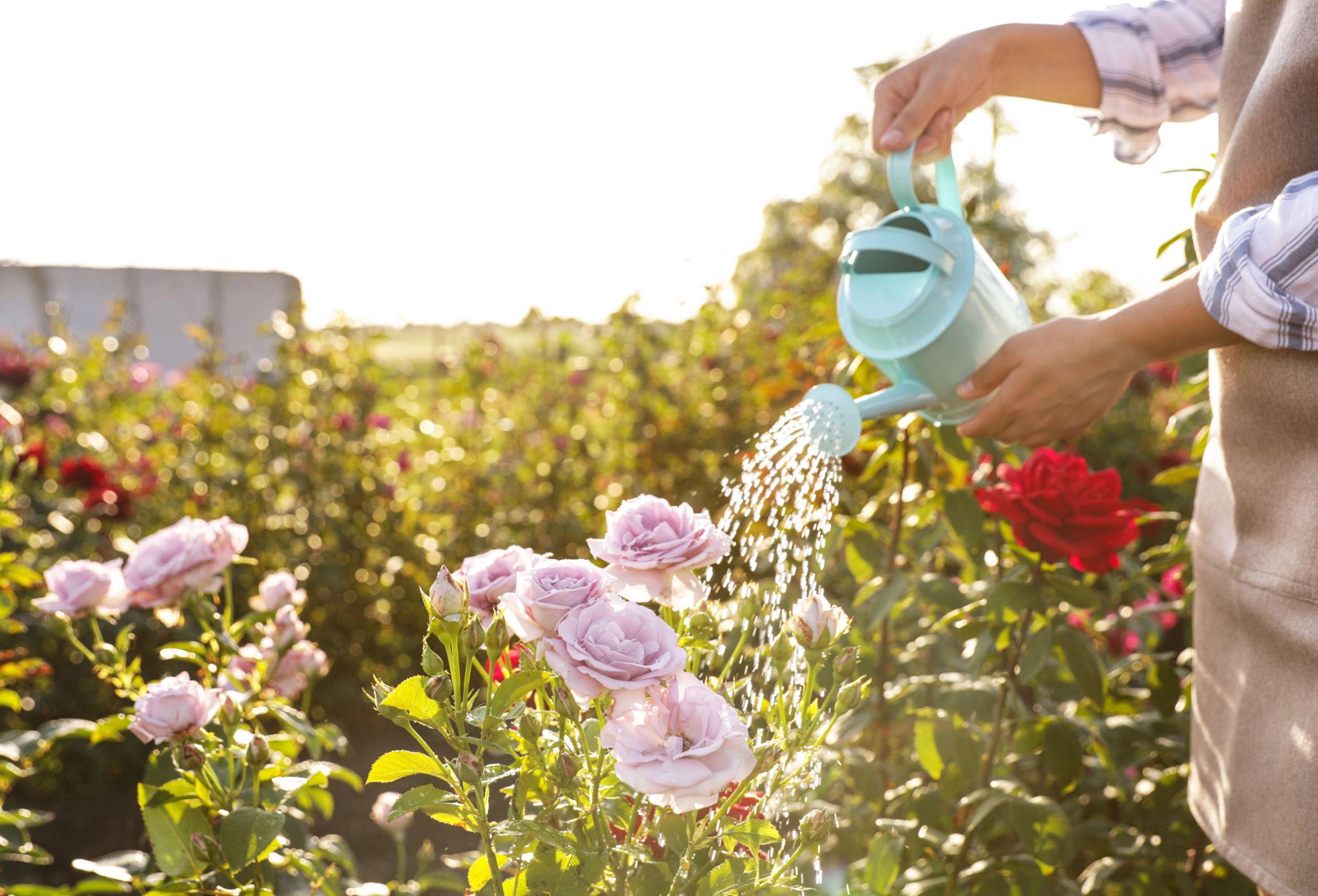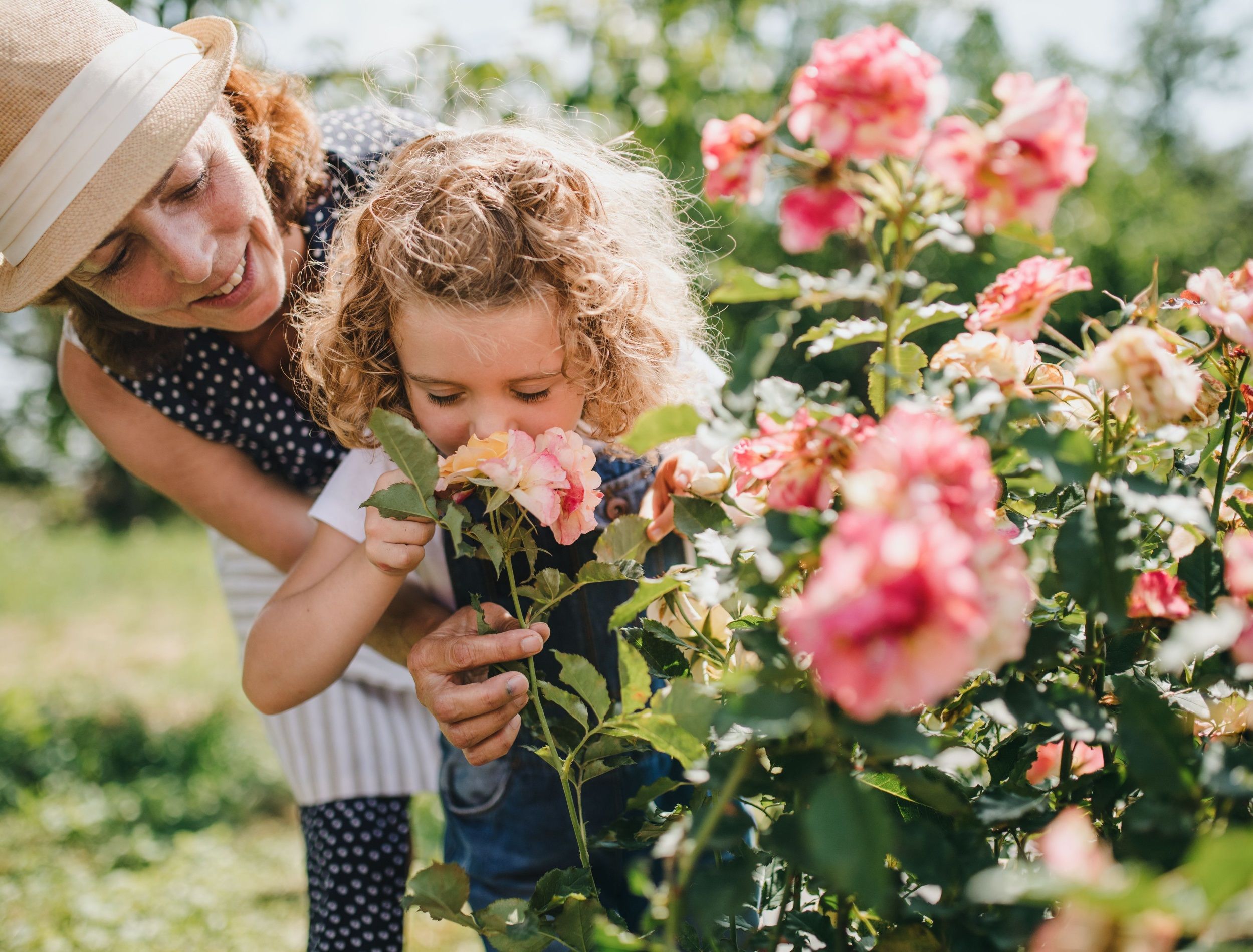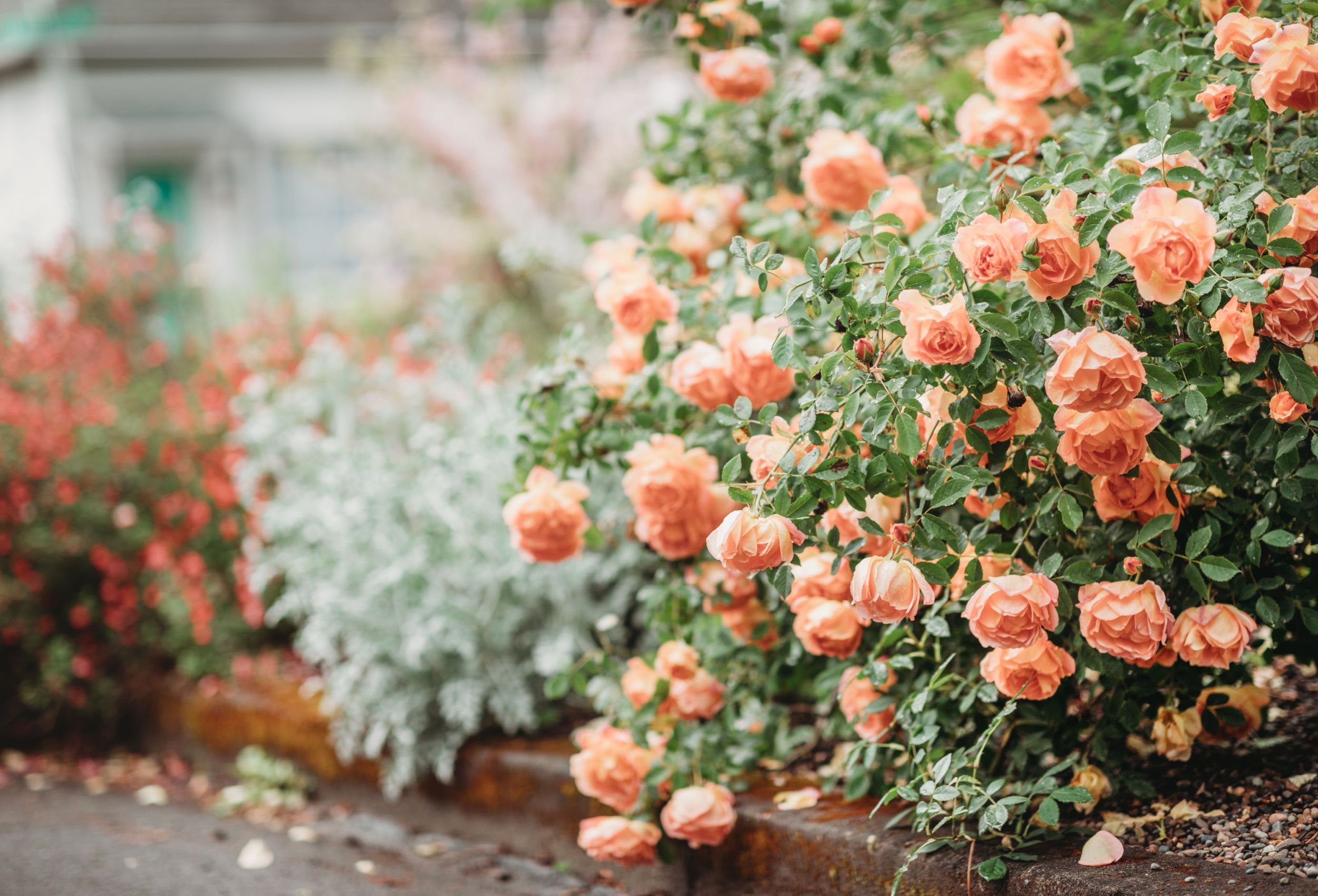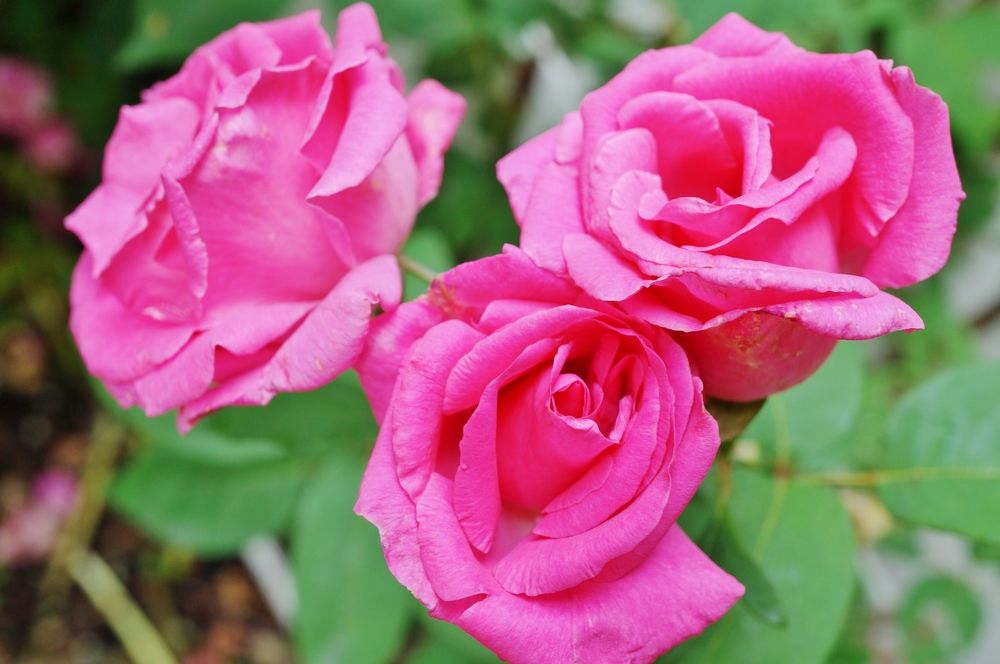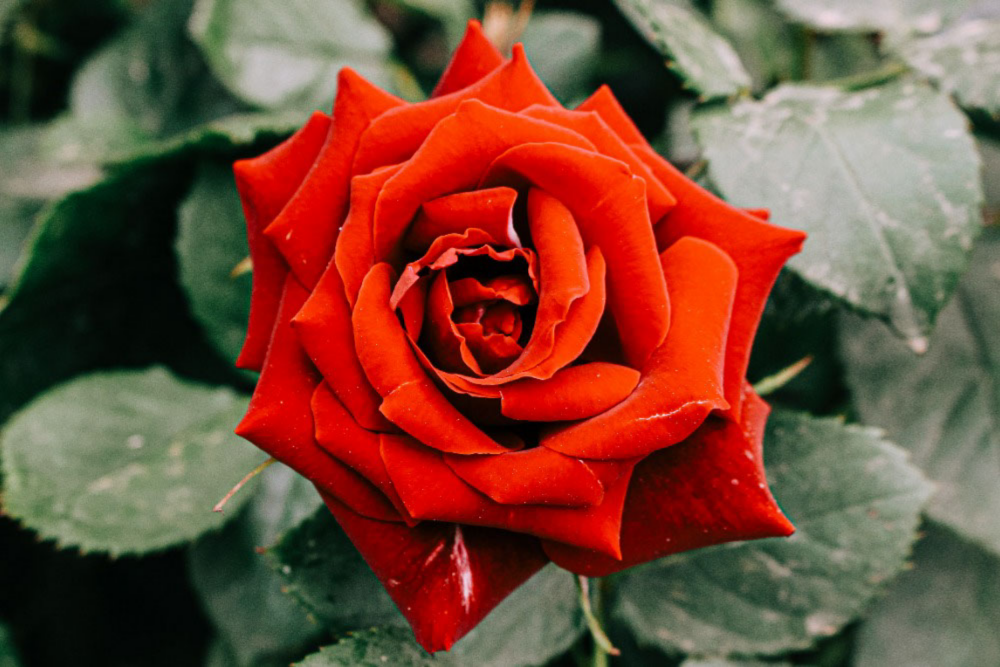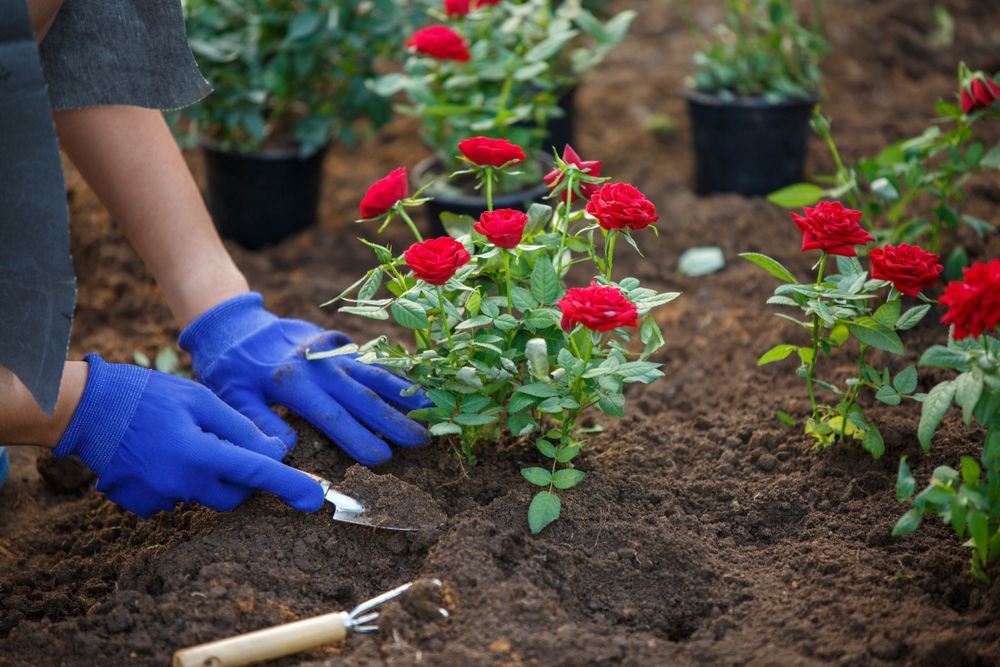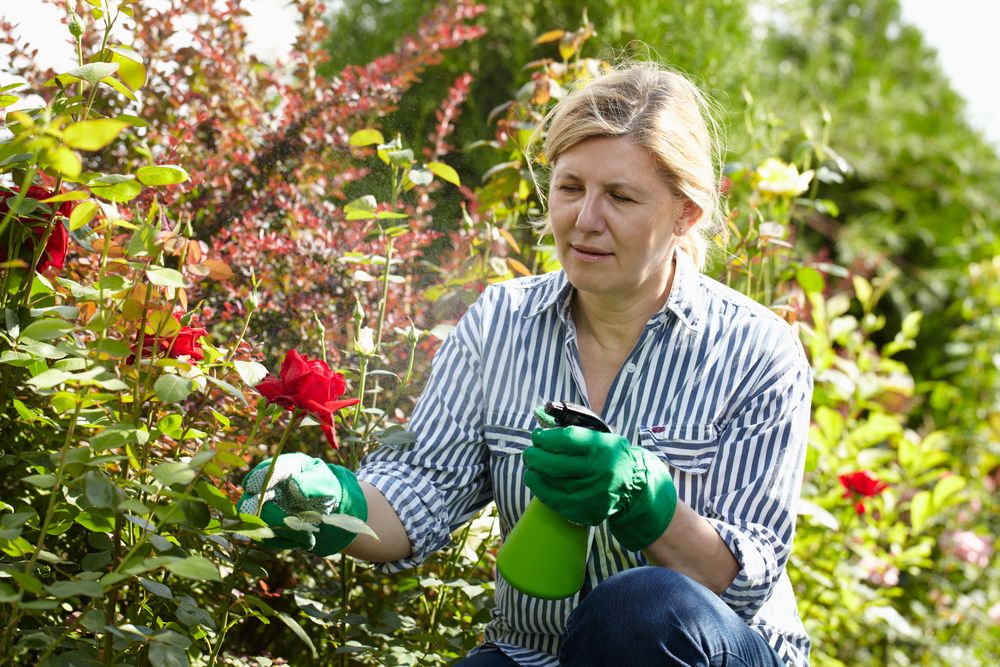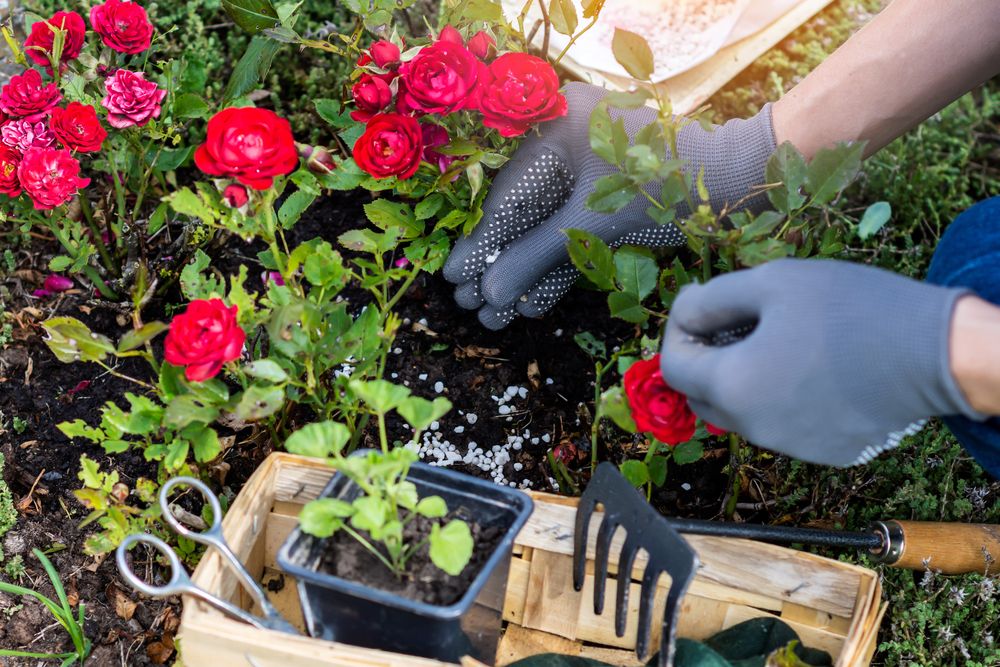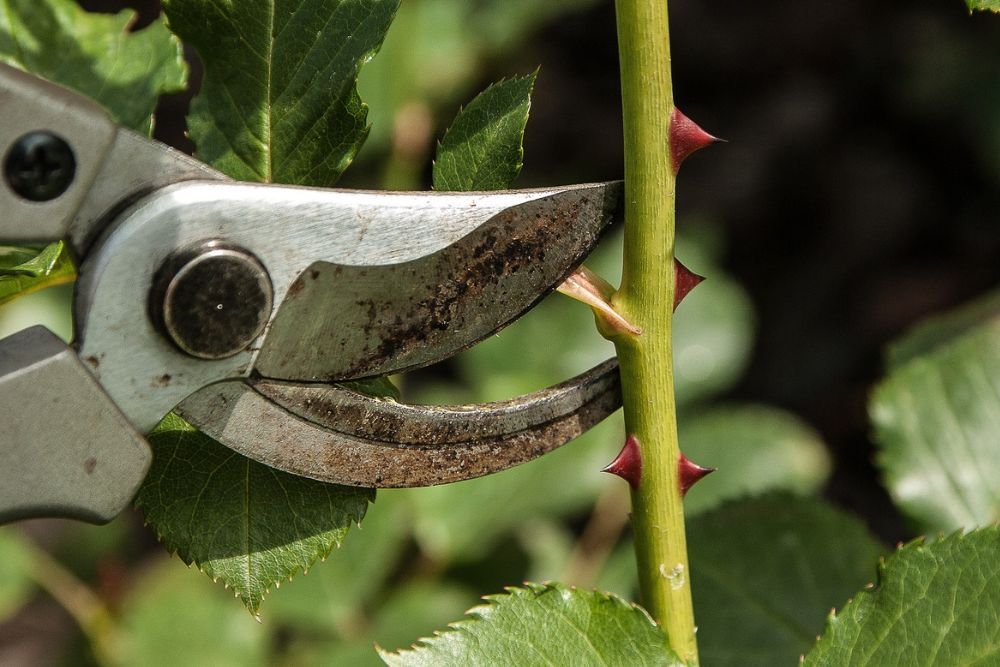The addition of roses to landscapes and gardens has been popular s for centuries. With their stunning beauty and sweet fragrance, roses are versatile flowers that add color, texture, and charm to any outdoor space.
Whether you are an experienced gardener or just starting to explore your green thumb, explore everything about adding roses to your landscape. From selecting the right variety to planting and care tips, learn all you need to create a stunning rose garden that will bring joy to your home.
Why You Should Add Roses to Your Landscape
Image credits: Ground Picture via Shutterstock
Adding roses to your landscape can bring a multitude of benefits, both aesthetically and environmentally. They are prized for their beauty, with a wide range of colors, shapes, and sizes available to suit any taste. Their sweet fragrance can add an extra dimension of enjoyment to your outdoor spaces. Their blooms attract pollinators like bees and butterflies, helping to support local ecosystems.
Roses are also relatively low maintenance, and you can grow them in many different climates, making them a versatile addition to your garden. Plant them in borders, as part of a mixed bed, or in containers, roses help enhance your landscape's visual appeal and provide a peaceful escape from the hustle and bustle of daily life.
Things to Keep in Mind
Now that you know why you should add roses to your landscape, learn what you should keep in mind when doing so.
The Right Type
Image credits: MaryShutterstock via Shutterstock
There are many types of roses, including hybrid tea roses, shrub roses, climbers, and miniature roses, each with unique features and growing habits. When choosing, think about factors such as size and shape, bloom time, disease resistance, and fragrance.
Hybrid tea roses, for example, have large, fragrant blooms, but they may need more deadheading and disease control. Shrub roses, on the other hand, are more hardy and low-maintenance but may not have the same showy blooms.
Consider your specific landscape needs, such as the desired height and spread and the overall look you are trying to achieve, and pick the variety that will best meet your requirements.
Climate
Image credits: EQRoy via Shutterstock
Various roses have different requirements for sunlight, temperature, and moisture, and planting the wrong type in an unfavorable zone can lead to stunted growth, poor blooms, and even death. Taking the time to consider the climate will pay off in the long run, with a lush, healthy rose garden that adds color, fragrance, and life to your landscape. If you do not know which type is best for your climate, you can check with your local nursery.
Here is a list of popular rose types that are suitable for various growing zones:
- Zone 5: Rugosa Roses, Shrub Roses, Rambling Roses
- Zone 6: Hybrid Tea Roses, Knock Out Roses, Climbing Roses
- Zone 7: Drift Roses, Thornless Climbing Roses, Flower Carpet Roses
- Zone 8: Old Garden Climbers, Modern Climbers, Hybrid Perpetual Roses
- Zone 9: English Roses, Bourbon Roses, China Roses
- Zone 10: Hybrid Musk Roses, Tea Roses, Centifolia Roses
Light
Image credits: Samer Daboul via Pexels
Most roses need at least six hours of direct sunlight to thrive and produce blooms. When choosing the location for your roses, consider sun exposure throughout the day. Make sure the spot you select receives enough light to meet the specific needs of your chosen variety. In addition, be mindful of surrounding trees and structures that may cast shadows at different times of the day.
Soil Condition
Image credits: Sergey Mironov via Shutterstock
Roses need well-draining soil with a pH ranging from 6.5 to 7. Before planting your roses, test the soil to determine its pH and nutrient levels. Amend it as needed to create the right growing conditions. Proper soil preparation and maintenance will help ensure that your roses have the right foundation for healthy growth and beautiful blooms.
Watering
Image credits: Michal Kowalski via Shutterstock
Roses need a healthy balance of soil moisture to thrive and grow. Overwatering or shallow watering weakens the root system and hinders growth. For best results, water about two feet deep into the soil. Wait until the topsoil has dried out before watering again.
Depending on the soil type, an inch of water should reach depths of 12 inches in sandy soil, 6 to 10 inches in loam, and 4 to 5 inches in clay soil. The right amount of water and soil moisture will provide optimal growth and beauty in your garden.
Fertilizing
Image credits: Jurga Jot via Shutterstock
When it comes to fertilizing, the right amount depends on the time of year and the size and location of the plants. Regardless of the amount, select a fertilizer designed for the roses you grow that provides vital micronutrients and controlled-release nitrogen.
To keep your roses healthy and thriving, fertilize them once a month from mid-February to mid-November. For each plant, add 1 cup of fertilizer per month or ½ cup every two months. If your plants are smaller, reduce the amount of fertilizer accordingly.
Pruning
Image credits: Jacqueline Macou via Pixabay
Regular pruning helps to promote healthy growth, improve air circulation, and encourage the development of more blooms. It also controls the size and shape of the plant, making it easier to manage and maintain.
When pruning roses, remove dead, diseased, or damaged wood, as well as crossing or congested branches. Prune back stems to promote branching and remove spent blooms to encourage the production of new ones. Also, prune in late winter or early spring, just before new growth begins.
To Sum Up
Adding roses to your landscape can be a rewarding and beautiful experience, but it requires careful consideration and attention to detail. From choosing the right variety and considering the climate to ensuring adequate sunlight, soil conditions, and regular fertilization and pruning, there are many factors you have to remember about when creating a thriving rose garden. With proper care, however, roses can bring color, fragrance, and life to your outdoor space for years.
Are you growing roses in your garden? Comment below, and as always, please share!

